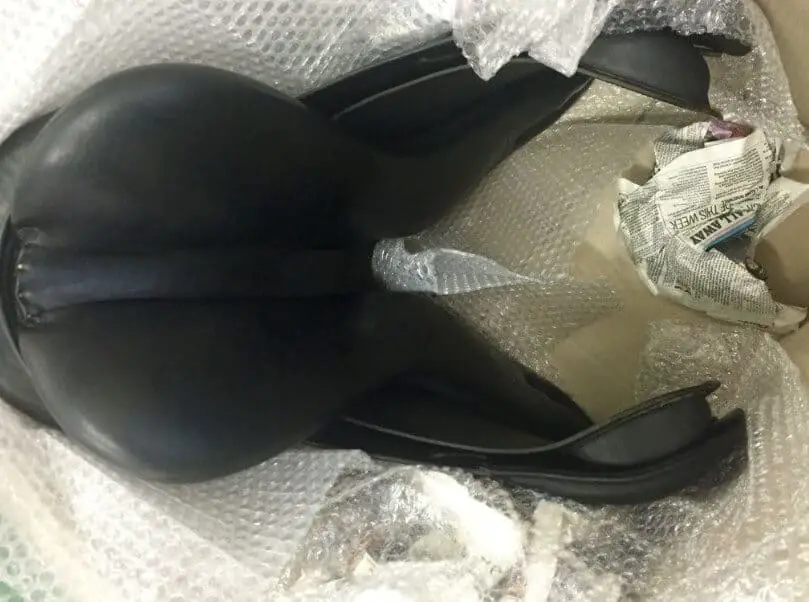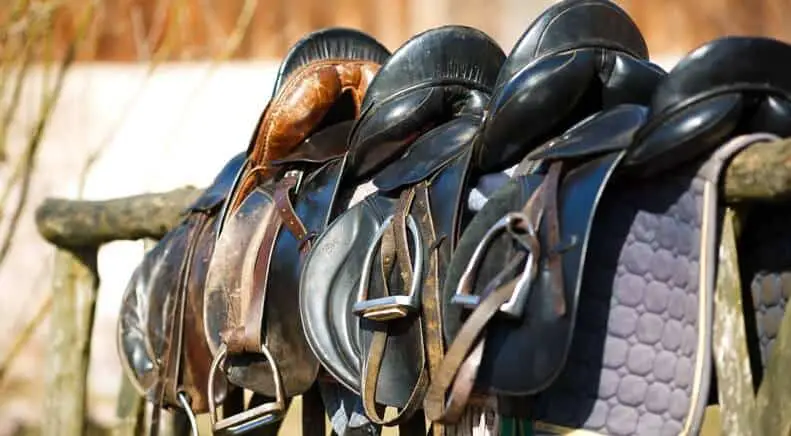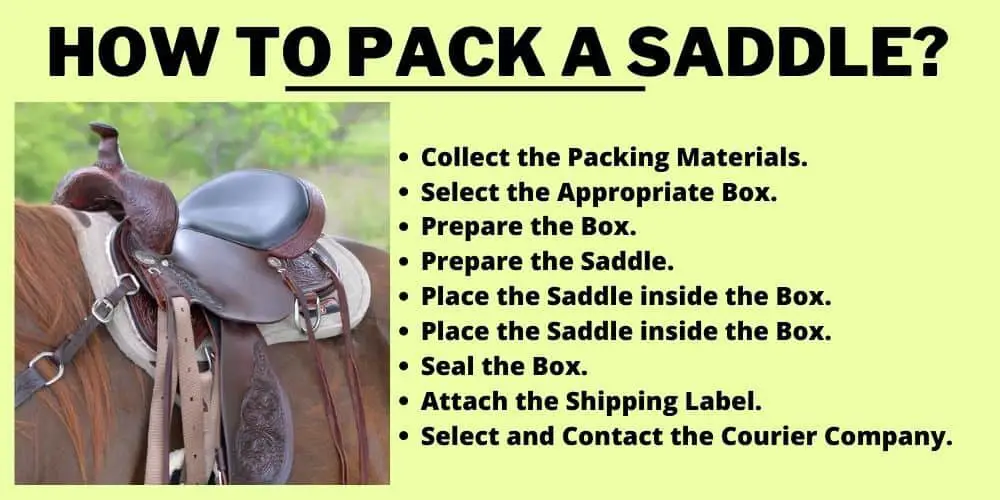Learning how to ship a saddle efficiently can turn out to be a difficult task, even for a shipping expert. Different factors must be taken into consideration. Plus, how it’s packed matters a great deal too.
But It’s not right to rely completely on the courier company for your packing, no matter how competent they are. The best way to ensure efficient shipping is to take the entire responsibility upon yourself.
And in case you are wondering where to find the perfect guide on how to ship a saddle, we present ourselves. Let us walk you through the process until you become a packing pro.
So, hop right in!

Table of Contents
Different Types of Saddles
Honestly speaking, there can be a thousand different varieties of saddles. It depends on the specific discipline they are being used for, as well as on the riding styles and the riders’ comfort levels.
Some common types of saddles are:

But there isn’t any reason to get overwhelmed with the long list of saddles. For, no matter which kind you choose to ship, the packing method remains the same.
How to Ship a Saddle with Right Packaging (Exclusive Tips)
The essence of perfect shipping lies in efficient packing. Once you know how to pack your saddle, shipping it across borders will seem like a cakewalk. So, make sure that you put in the effort.
To make it seem easier, we are here with steps of how to ship a saddle:

Step 1: Collect the Packing Materials
The first step is to collect all the packing materials you need and keep them handy while packing.
The things you will need are:
✅ Sturdy packing box.
✅ Protective materials like bubble wraps, saddle pads, crumpled paper or old newspaper, foam sheets, saddle cover, and the like.
✅ Bed pillows or cushions.
✅ Packing tape.
Step 2: Select the Appropriate Box
If the original package is retained and is sturdy enough, then it’s okay to use it for shipping. Otherwise, you need to purchase a box (either online or offline) that’s the appropriate size for the saddle you wish to ship.
To determine the size of the box, you need to check the saddle’s seat size first. For an average saddle, a box size of 18” x 18” x 24” will be perfect. However, if the saddle is of a different variety, a wider box size of either 20” x 20” x 24” or 22” x 22” x 24” might suffice.
Next, you must also check the saddle’s weight to determine the box’s weight. An ordinary saddle weighs around 13 to 15 lbs. If the saddle weighs more, you would need a box with greater strength.
Remember to purchase a box slightly larger than the saddle to ensure a comfortable fit and allow extra spacing for the wrapping stuff. Also, the box must be doubled-walled, labeled as heavy-duty and sturdy enough to endure the weight of your precious saddle.
Step 3: Prepare the Box
After you have successfully purchased the perfect box, you must now prepare it to handle your shipment.
First, fold the box to bring it into its shape, and then tape the bottom across the seam and the flap edges. The best way to tape it is to run two pieces perpendicular to one another, covering a bit up the edges. Consider doubling the layers to provide some extra strength.
Next, line up the box bottom with layers of bubble wraps, saddle pads, soft towels, and the bed pillows or cushions. If you wish to use packing peanuts, ensure they are enclosed in bags.
Remember there must be at least 2 to 3 layers of protection at the bottom of the box that must cover all the edges completely.
Step 4: Prepare the Saddle
Once the packing box is all set, the next thing you need to work on is the saddle.
Wrap the saddle in the foam sheet or bubble wraps and double or triple the layer as per the thickness of the wraps.
But avoid putting too many packing materials or packing the wraps so tight that it damages the panel with the inward pressure.
Take extra care while covering the front of the pommel, the seat, the cantle, the patent, and delicate saddle parts. For calfskin, an extra amount of foam or a layer of bubble wrap will be added.
Secure the bubble wraps with packing or scotch tape to ensure that it doesn’t get unwrapped during transit. If needed, consider double tapping at the sensitive places.
Consider putting the saddle in a trash bag of around 55 gallons to protect it from water damage. Having a saddle cover to compliment the packing can work wonders too.
Step 5: Place the Saddle inside the Box
Once the saddle is covered, it’s ready to be put inside the box. But there is a particular method for it:
✅ The saddle is to be placed with the pommel down to allow maximum room for the flaps. The horns and the forks must rest on the cushion inside the box with added padding around them.
✅ Ensure that there is no curling of the flaps and that the flocking is not folded or creased.
✅ The pommel must be supported by a pillow or cushion underneath to keep the weight and pressure away from the delicate flaps.
✅ The space between the flaps must be carefully filled with bubble wraps or saddle pads to press and hold them in the correct position.
Consider putting some bubble wraps, peanut bags, or cushions on the top surface if there is space. Fill up any extra space with the packing materials so that the saddle does not move inside the box.
Step 6: Seal the Box
Once completely satisfied with the packaging, seal the box with double layers of packing tape. Again, the seal needs to be done by tapping the two pieces of packing tape perpendicular to one another and going up the edges.
All the edges must also be sealed properly with the packing tape so that the box doesn’t burst open during transit. Here too, doubling the layers will multiply its strength.
Step 7: Attach the Shipping Label
Once the package is all sealed up, you must attach the shipping label. This is the step that would ensure that the package reaches its destination. Hence, it’s important to ensure that:
✅The label is properly glued to the box and wouldn’t come off at transit.
✅The address, tracking number, bar codes, and other information are properly visible.
✅No trace of any old labels is left on the box that might create any confusion at the time of delivery.
Step 8: Select and Contact the Courier Company
The last step is to select and contact the courier company to ship your saddle with.
You can make the decision based on your previous experiences with different courier companies and choose the one which seems most reliable.
Or, you can also select the company based on the method and cost of transportation and the services offered.
There are various shipping methods and courier services like tracking facilities, insurance services, fast deliveries, etc. Plus, the cost of these services needs to be considered too. Compare the services and prices each company charges and then make an informed decision.
Once you choose the shipping company with which to trust your package, the next thing is to contact them. You can either have them pick it up or drop it yourself at the shipping center, as per your preference.
Remember to take your shipping receipt from them and keep it safe with you till your package reaches its destination.
Conclusion:
Shipping delicate items overseas is an art. And packing stands as a crucial part of that art.
Hence, when it comes to efficient packing to learn how to ship a saddle, and there can be no one better to trust than yourself. You know the value of your item more than anyone else, and hence, no one else can take better care of it. And if you follow our packing method to the pie, you can be sure that not a scratch will land on your saddle.
So, just pack them up and ship them away!